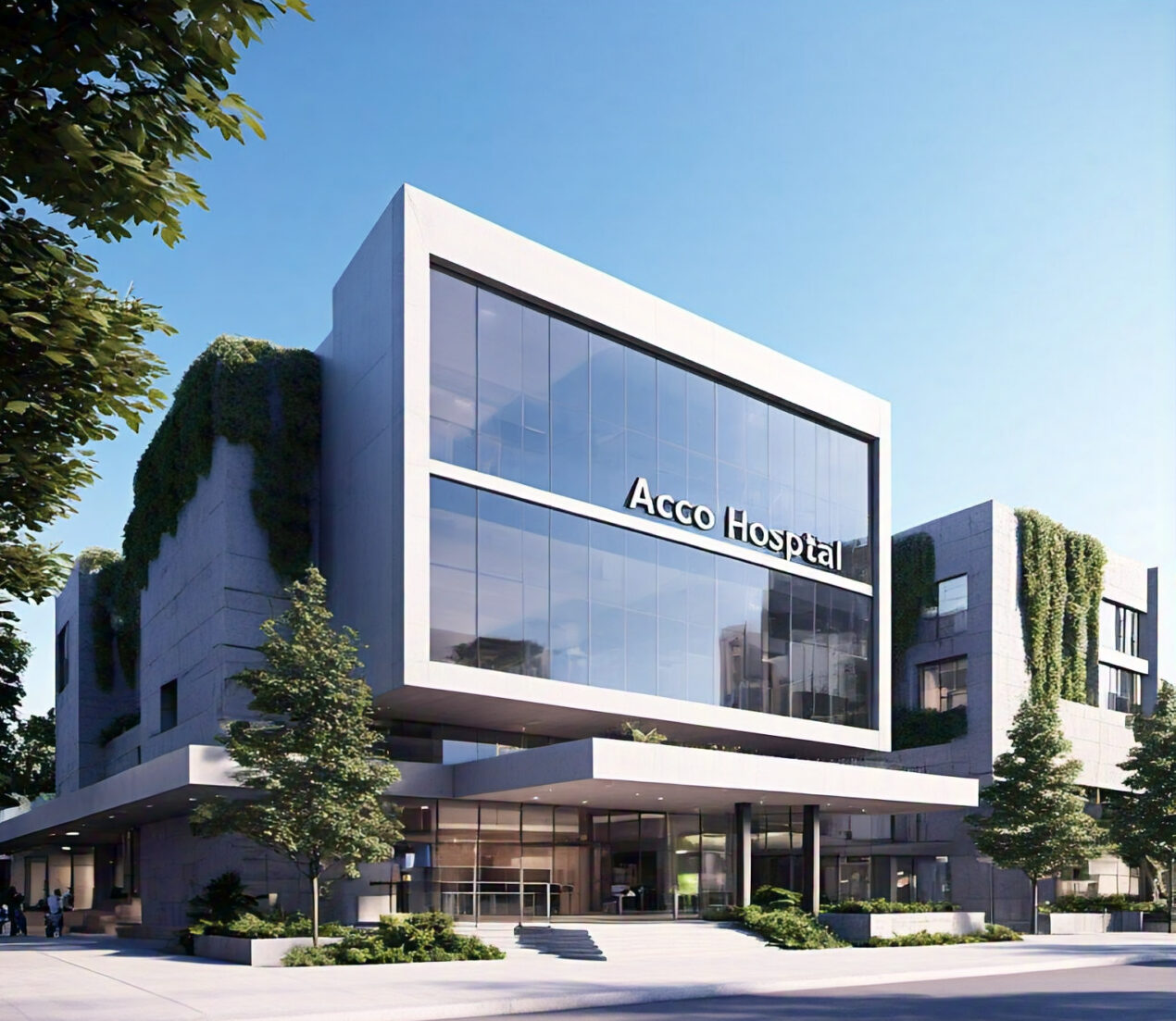
ACCO Comparing Steel Warehouses vs. Traditional Warehouses in Karachi
Introduction
In Karachi’s bustling commercial environment, selecting the right type of warehouse is crucial for efficient storage and business operations. Steel warehouses and traditional warehouses each have their unique advantages and drawbacks. This article compares steel warehouses to traditional warehouses in Karachi, helping businesses make informed decisions based on their specific needs and goals.
| Headings | Sub-Topics |
|---|---|
| Introduction | Overview of warehouse types in Karachi |
| Material Composition and Construction | Differences in materials and construction methods |
| Durability and Longevity | How each type withstands time and elements |
| Cost-Effectiveness | Initial investment and long-term savings |
| Construction Speed and Efficiency | Time and efficiency of building processes |
| Flexibility and Customization | Adapting to specific business needs |
| Environmental Impact | Sustainability and eco-friendliness |
| Safety and Security Features | Protection of goods and safety measures |
| Maintenance Requirements | Upkeep and long-term maintenance needs |
| Energy Efficiency | Insulation and energy-saving capabilities |
| Versatility Across Industries | Suitable applications in various sectors |
| Case Studies in Karachi | Real-world examples and experiences |
| Technological Integration | Incorporation of modern technologies |
| Economic Impact on Businesses | Financial implications for local businesses |
| Challenges and Solutions | Addressing potential issues with each type |
| Future Trends in Warehousing | Innovations and future directions |
| FAQs | Common questions and answers |
| Conclusion | Summary of findings and final recommendations |
Material Composition and Construction
Steel Warehouses
Steel warehouses are primarily constructed using high-quality steel. Prefabricated steel components are manufactured off-site and then assembled on-site. This method allows for precision and consistency in construction, ensuring a robust and reliable structure.
Traditional Warehouses
Traditional warehouses typically use materials such as brick, concrete, and wood. These materials are sourced and constructed on-site, which can lead to variability in quality and longer construction times. Traditional methods may involve more manual labor and less mechanization compared to steel construction.
Durability and Longevity
Steel Warehouses
Steel warehouses are renowned for their durability and long lifespan. Steel’s resistance to harsh weather conditions, pests, and fire makes it a reliable material for long-term use. With proper maintenance, steel structures can last for decades without significant deterioration.
Traditional Warehouses
The durability of traditional warehouses depends largely on the materials used. Brick and concrete can provide good longevity, but they are susceptible to issues like cracking, moisture damage, and pest infestations. Wood, in particular, requires regular maintenance to prevent rot and termite damage.
Cost-Effectiveness
Steel Warehouses
While the initial cost of building a steel warehouse might be higher than traditional materials, the long-term savings are substantial. Steel warehouses require less maintenance, have lower insurance premiums due to their fire-resistant properties, and offer excellent energy efficiency. These factors contribute to considerable savings over the warehouse’s lifespan.
Traditional Warehouses
Traditional warehouses generally have a lower initial construction cost. However, ongoing maintenance, higher energy consumption, and potential repair costs can add up over time, making them less cost-effective in the long run compared to steel warehouses.
Construction Speed and Efficiency
Steel Warehouses
The construction process for steel warehouses is notably faster and more efficient than traditional building methods. Prefabricated steel components can be quickly assembled on-site, reducing labor costs and minimizing downtime. This rapid construction is particularly advantageous for businesses needing immediate expansion or relocation.
Traditional Warehouses
Building traditional warehouses typically takes longer due to the on-site construction of materials like brick, concrete, and wood. This method is labor-intensive and can be delayed by weather conditions and other unforeseen factors, leading to longer construction timelines.
Flexibility and Customization
Steel Warehouses
Steel warehouses offer a high degree of flexibility and customization. Businesses can design these structures to meet their specific requirements, including size, layout, and additional features. This adaptability ensures that the warehouse can accommodate changing business needs and operational demands.
Traditional Warehouses
Traditional warehouses also allow for customization, but the process is generally more complex and time-consuming. Changes to the design or structure during construction can lead to delays and increased costs. Additionally, traditional materials may limit the extent of customization compared to steel.
Environmental Impact
Steel Warehouses
Steel is an environmentally friendly building material. It is fully recyclable and can be reused without losing its properties. The construction process of steel warehouses generates less waste compared to traditional materials, making them a sustainable choice for businesses aiming to reduce their environmental impact.
Traditional Warehouses
Traditional construction materials like concrete and brick are less environmentally friendly. The production of these materials generates more carbon emissions and waste. Additionally, traditional warehouses may not be as energy-efficient, leading to higher operational costs and a larger carbon footprint.
Safety and Security Features
Steel Warehouses
Steel warehouses provide enhanced safety and security features. They are resistant to natural disasters such as earthquakes and hurricanes, offering better protection for stored goods. Additionally, steel’s fire-resistant properties add an extra layer of security, reducing the risk of fire-related damages.
Traditional Warehouses
The safety and security of traditional warehouses depend on the materials used. While brick and concrete can provide good protection, they are not as resistant to natural disasters as steel. Wood, in particular, is more vulnerable to fire and pests, making it a less secure option.
Maintenance Requirements
Steel Warehouses
Maintaining a steel warehouse is straightforward and cost-effective. Steel structures do not suffer from issues like warping, cracking, or pest infestations, which are common with other materials. Regular inspections and minimal repairs ensure that the warehouse remains in top condition for extended periods.
Traditional Warehouses
Traditional warehouses require more maintenance due to the susceptibility of materials like brick, concrete, and wood to wear and tear. Regular upkeep is needed to address issues such as moisture damage, cracking, and pest infestations, leading to higher maintenance costs over time.
Energy Efficiency
Steel Warehouses
Steel warehouses can be designed to be highly energy-efficient. By incorporating insulation materials and energy-efficient systems, these warehouses can significantly reduce heating and cooling costs. This not only lowers operating expenses but also contributes to a smaller carbon footprint.
Traditional Warehouses
Traditional warehouses are generally less energy-efficient. Materials like concrete and brick do not provide the same level of insulation as steel, leading to higher energy consumption for heating and cooling. This increased energy usage results in higher operational costs and a larger environmental impact.
Versatility Across Industries
Steel Warehouses
The versatility of steel warehouses makes them suitable for a wide range of industries, including manufacturing, retail, logistics, and agriculture. Their adaptable design allows businesses to use them for various purposes, from storage to production facilities.
Traditional Warehouses
Traditional warehouses are also versatile and can be used in various industries. However, their adaptability may be limited by the materials and construction methods used. Steel warehouses generally offer greater flexibility and customization options to meet specific business needs.
Case Studies in Karachi
Several businesses in Karachi have successfully implemented both steel and traditional warehouses, showcasing their practical benefits and drawbacks. These case studies highlight the durability, cost savings, and flexibility that steel warehouses provide, as well as the challenges associated with traditional construction methods.
Technological Integration
Steel Warehouses
Modern steel warehouses can seamlessly integrate advanced technologies such as automated storage and retrieval systems (ASRS), climate control, and security monitoring. These technological adaptations enhance operational efficiency and ensure the safety of stored goods.
Traditional Warehouses
Integrating modern technologies into traditional warehouses can be more challenging due to the limitations of materials and construction methods. While it is possible, the process may require more modifications and result in higher costs compared to steel warehouses.
Economic Impact on Businesses
Steel Warehouses
The adoption of steel warehouses has positively impacted Karachi’s economy. These structures have created job opportunities in construction and maintenance and have attracted businesses seeking reliable and efficient storage solutions. The increased productivity and efficiency offered by steel warehouses contribute to the overall economic growth of Karachi.
Traditional Warehouses
Traditional warehouses also play a significant role in Karachi’s economy. However, their higher maintenance costs and longer construction timelines can be a disadvantage for businesses looking for quick and cost-effective storage solutions.
Challenges and Solutions
Steel Warehouses
While steel warehouses offer numerous benefits, they also come with challenges such as susceptibility to corrosion and higher initial costs. However, these issues can be mitigated through proper material selection, such as using galvanized steel, and regular maintenance practices. These solutions ensure the longevity and cost-effectiveness of steel warehouses.
Traditional Warehouses
Traditional warehouses face challenges such as higher maintenance requirements and susceptibility to damage from natural disasters. Regular upkeep and using high-quality materials can help mitigate these issues, but they often result in higher long-term costs compared to steel warehouses.
Future Trends in Warehousing
The future of warehousing in Karachi looks promising, with ongoing advancements in materials and construction techniques. Innovations such as smart warehouses, which incorporate IoT and AI technologies, are set to revolutionize the industry. These advancements will make steel warehouses even more efficient and adaptable to evolving business needs, while traditional warehouses will need to evolve to keep pace with these technological changes.
FAQs
What makes steel warehouses more durable than traditional warehouses? Steel warehouses are more durable due to their resistance to harsh weather conditions, pests, and fire. The robust nature of steel ensures a longer lifespan and less frequent repairs.
Are steel warehouses more expensive to build than traditional warehouses? The initial cost of building a steel warehouse may be higher, but the long-term savings in maintenance, insurance, and energy efficiency make them more cost-effective overall.
How long does it take to construct a steel warehouse? Steel warehouses can be constructed much faster than traditional warehouses due to the prefabrication of components and quick on-site assembly. This process can take a few weeks to a few months, depending on the size and complexity of the structure.
Can steel warehouses be customized to fit specific business needs? Yes, steel warehouses offer a high degree of customization, allowing businesses to design the layout, height, and features to meet their specific requirements.
What environmental benefits do steel warehouses offer? Steel is a recyclable material that generates less waste during construction. Steel warehouses have a smaller carbon footprint and can be designed with energy-efficient systems to further reduce environmental impact.
What industries benefit the most from steel warehouses? Steel warehouses are versatile and can benefit a wide range of industries, including manufacturing, retail, logistics, and agriculture. Their adaptable design makes them suitable for various business needs.
Conclusion
Steel warehouses and traditional warehouses each have their unique advantages and drawbacks. In Karachi’s dynamic business environment, steel warehouses stand out for their durability, efficiency, and adaptability. They offer long-term cost savings, faster construction times, and greater environmental benefits compared to traditional options. As businesses in Karachi continue to seek reliable and efficient storage solutions, steel warehouses are poised to play a significant role in meeting these needs and supporting the city’s economic growth.




